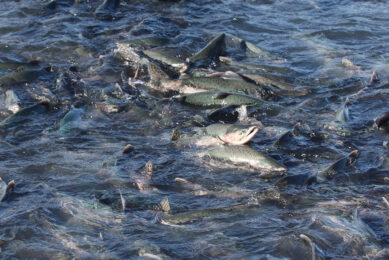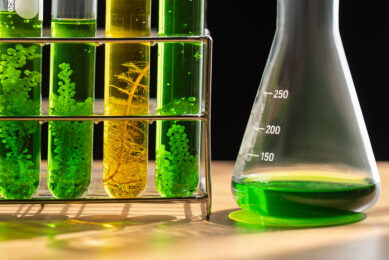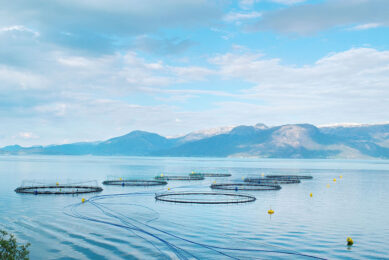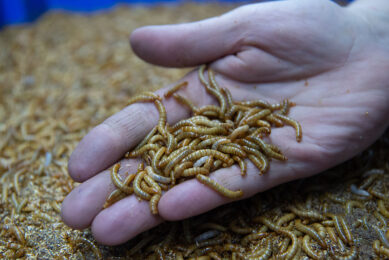Feed the fish and feed the world

As demand for fish cannot be adequately met by wild caught fish, the aquaculture industry makes up market needs. And now for the first time, the volume of farmed fish has taken over the volume of wild catch. At the same time, we need more plant based fish feed and more knowledge about new farmed species.
You can certainly say that 2014 is a turning point for the aquaculture industries. Figures from FAO show that between 2010 and 2030, the volume of wild captured fish for human consumption is projected to remain stable at around 65 million tonnes. The farmed fish volume will go from 120 million tonnes in 2010 to around 150 million tonnes in 2030. This means that the chance increases that the fish on the consumer’s plate is a farmed one. This doesn’t come as a surprise I guess. Growth has been seen in the last decade already, fuelled by population growth, increased income and health focus for today’s consumers drive the growth for aquaculture. And it seems that fish becomes a serious competitor for poultry, beef and pork.
Fish diets to change
But where there is rapid growth, there are also challenges. At the recent Aquavision conference, Knut Nesse, CEO at Nutreco named the quest for suitable fish meal and fish oil replacements, the fight against fish and prawn diseases, sustainable farming practices and farming knowledge about new fish species as the main challenges. Regarding fish feed, the main issue is to reduce the inclusion of marine ingredients in the fish diets. Possible alternatives include (micro) algae, insect meal, meat meal, grain and soy.
Fishmeal inclusion to drop
Finding alternatives to fish meal is needed as we are dealing with decreased supplies of industrially caught fish as a result of tighter quotas, additional controls on unregulated fishing and increased use of more cost-effective dietary fishmeal replacers. In the last 13 years for which data are available (1995–2008), fishmeal inclusion in major fish diets already declined considerably. The FAO projects that, in the next 10-12 years, fishmeal inclusion in the diets of carnivorous fish and crustacean species will be further reduced by 10–22%, and by 2–5% for omnivorous fishes. For example for salmon feed, the inclusion of fish meal in the compound feed is projected to decrease to 12% in 2020 (from 45% in 2008). For trout feed it is projected that these diets will include 12% fish meal in 2020 compared to 40% in 2008. Tilapia and carp feed will only consist of 1% fish meal in 2020 (compared to 10% in 2008).
New species
Challenges not only include finding sustainable fish feed formulations. Also more different fish and shellfish species are ‘discovered’ to be suitable for farming. For some of them there is still limited knowledge on what to feed them and how they should be managed (compared to what we know about salmon feed for example). At Aquavision, Nesse mentioned that the real winners, in terms of growth, are (still) Atlantic salmon (+6%), white shrimp (+5%), tilapia (+9%), Amazon species (e.g. tambaqui/pacu, pirarucu) (+18%) and Asian species (e.g. snake head, Asian bass) (+4%). These species could exceed 1 million harvested tonnes by 2020. Probably, most people only know the salmon and tilapia, bit have never heard about the upcoming species such as the freshwater specie tambaqui.
New countries enter fish business
Skretting already produces speciality feed for over 60 fish and crustacean species, but I guess all these different types of feed can still be optimised. At the same time, also new countries enter the aquaculture business. Russia adopted a targeted programme for the development of its aquaculture industry by 2015. According to a Rabobank analyst, Brazil has great potential as well. According to this analyst, the country’s vast grain production, along with its large potential for further growth, provide the country with an advantage in production of species that consume a vegetarian diet, as feed costs make up around 60% of the total cost of fish production. And what about Africa? The aquaculture industry can really boom in this continent. Although wild fisheries still play a significant role here.
Aquaculture. It has become so much more than ‘only’ salmon from Norway and tilapia from the Philippines. It entails over 60 species that are farmed worldwide and probably even more in the near future. However, fast growth looks good, but companies can get into trouble when they grow too fast. Are they able to keep pace with their expansion, can they control diseases and environmental pressure?
Join 26,000+ subscribers
Subscribe to our newsletter to stay updated about all the need-to-know content in the feed sector, three times a week. Beheer
Beheer









 WP Admin
WP Admin  Bewerk bericht
Bewerk bericht